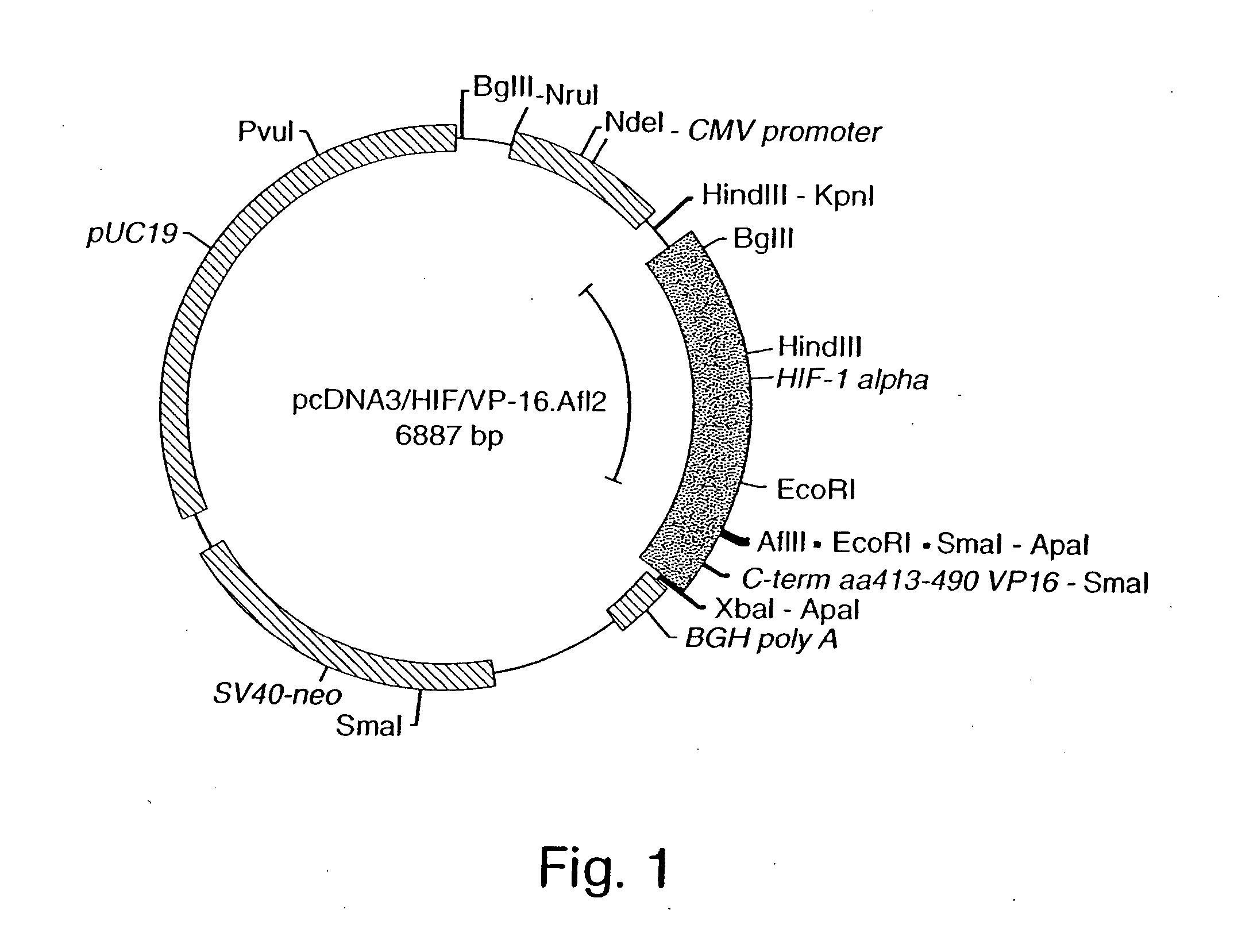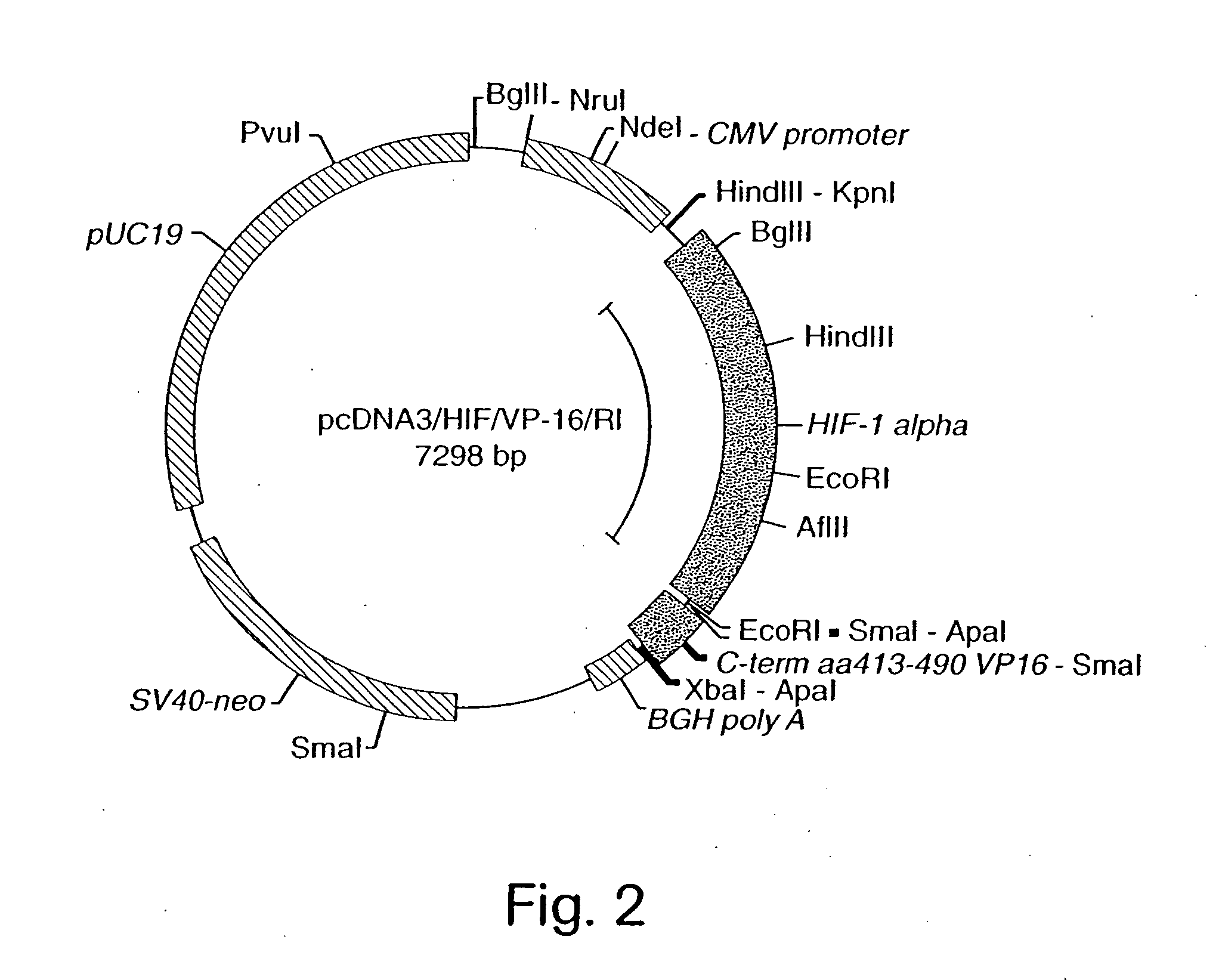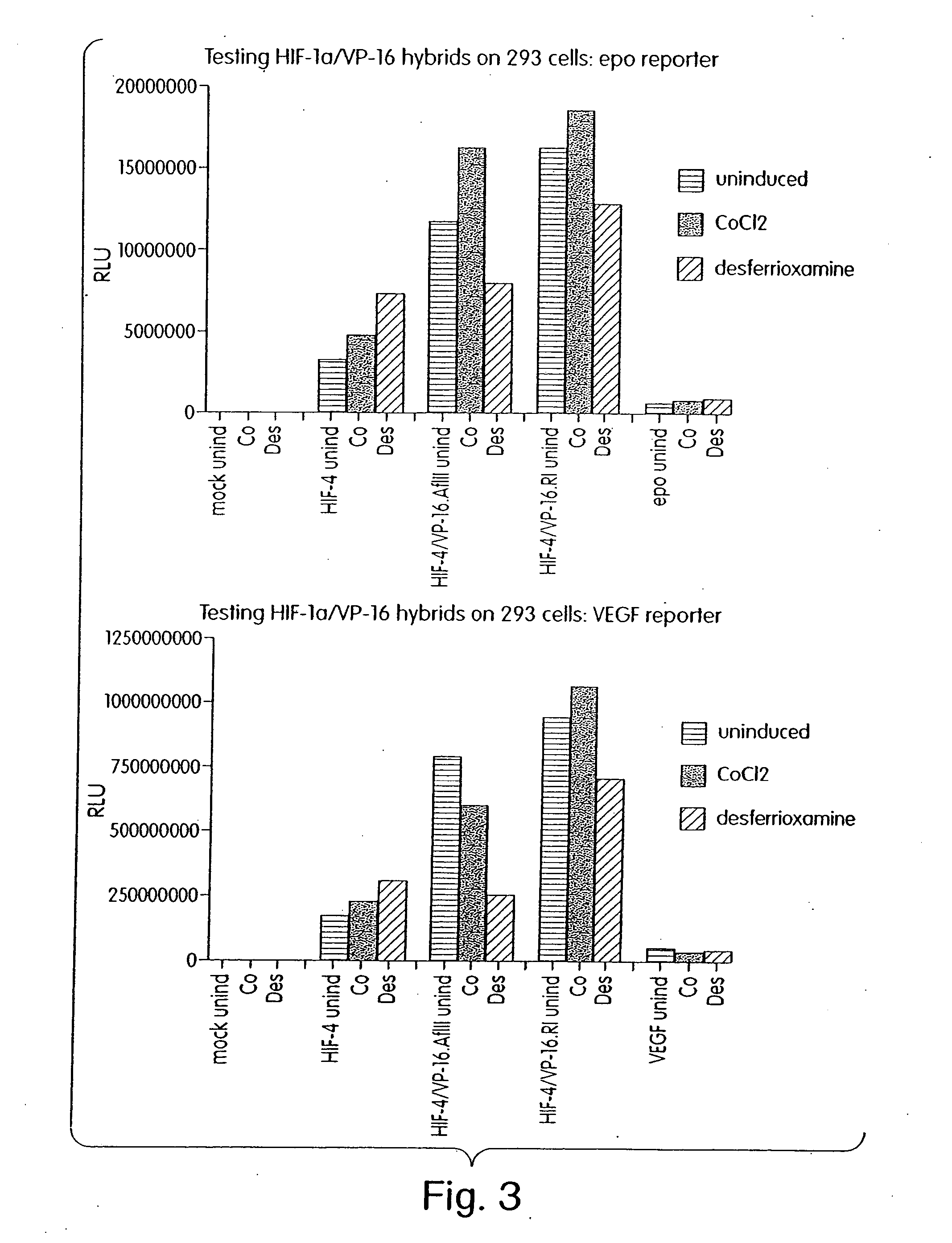Compositions and methods for inducing gene expression
a technology of inducible gene expression and composition, applied in the direction of drug composition, cardiovascular disorder, peptide, etc., can solve the problems of deprived of necessary levels of oxygen and nutrients, cardiac patients do not usually receive much benefit from this endogenous compensatory mechanism, and all have various limitations. , to achieve the effect of increasing the expression of hypoxia-inducible genes
- Summary
- Abstract
- Description
- Claims
- Application Information
AI Technical Summary
Benefits of technology
Problems solved by technology
Method used
Image
Examples
example 1
Hybrid / Chimera Construction
[0119] A hybrid transcription factor (pcDNA3 / HIF.VP-16.Afl2) composed of a DNA binding and dimerization domains from HIF-1α and the transactivation domain from herpes simplex virus VP16 (FIG. 1) was constructed to provide strong, constitutive activation of genes normally involved in the physiological adaptation to hypoxia. As is described below, we analyzed the effect of this HIF-1α / VP16 transcription factor on VEGF gene expression in vitro, and on neovascularization in a rabbit hindlimb ischemia model.
Recombinant Plasmids
[0120] The fill-length (aa1-826) HIF-1α gene was isolated by PCR (Advantage cDNA PCR Kit, Clontech, Palo Alto, Calif.) from a HeLa cell cDNA library (Clontech) using the primers set forth in SEQ ID NO's 1 and 2 and inserted between the KpnI and XbaI sites of the expression vector, pcDNA3 (Invitrogen, Carlsbad, Calif.). In this plasmid, gene expression is controlled by the cytomegalovirus (CMV) immediate early enhancer / promoter. The HI...
example 2
Activity of HIF-1α and HIF-1α / VP16 Chimeric / hybrid Constructs in vitro
[0122] The HIF-1α / VP16 hybrid constructs were tested for their ability to activate gene expression by cotransfection along with reporter plasmids into either 293 or HeLa cells (FIGS. 3 and 4, respectively). The reporter plasmids used in these experiments contained the luciferase gene under the transcriptional control of either the erythropoietin enhancer / promoter (Blanchard, K. L., et al., Mol. Cell. Biol. 12:5373-85 (1992)) or the VEGF promoter (Levy, A. P. et al., J. Biol. Chem. 270:13333-40 (1995)). (In FIGS. 3-5, pcDNA3 / HIF / VP16.Afl2 and pcDNA3 / HIF / VP16.R1 are referred to as “HIF-4 / VP-16.AflII” and “HIF-4 / VP-16.R1”, respectively.)
[0123] Prior to transfection, cells were plated in 6 cm dishes at a density of 1×106 (239) or 2.5×105 (HeLa) cells per dish. Cells were co-transfected with the HIF-1α or HIF-1α / VP16 expression plasmids and a luciferase reporter plasmid containing either the EPO enhancer / promoter or ...
example 3
VEGF Production in Response to the HIF-1α / VP16 Hybrid Constructs
[0126] To determine if the HIF-1α / VP16 hybrids were capable of activating expression of an endogenous VEGF gene, these constructs were transfected into HeLa cells and VEGF was assayed by ELISA. Prior to transfection, HeLa cells were plated in 6 cm dishes at a density of 2.5×105 cells per dish. The cells were transfected with 10 μg of the HIF-1α / VP16 hybrid plasmid DNA. At 24 hours post-transfection, cells in duplicate plates were either control (not-induced) or induced by adding fresh media containing 100 μg / ml desferrioxamine. At 40 hours post-induction, the media was harvested and assayed for VEGF by ELISA, (Quantikine™ R&D Systems, Minneapolis, Minn.) according to the manufacturer's instructions.
[0127] The results from this assay (FIG. 5) show that the hybrid HIF-1α / VP16 / AflII construct (truncated at amino acid 390 of HIF-1α) was able to activate expression of VEGF even in the absence of induction. The concentratio...
PUM
| Property | Measurement | Unit |
|---|---|---|
| molecular mass | aaaaa | aaaaa |
| depth | aaaaa | aaaaa |
| vascular diameter | aaaaa | aaaaa |
Abstract
Description
Claims
Application Information
 Login to View More
Login to View More - R&D
- Intellectual Property
- Life Sciences
- Materials
- Tech Scout
- Unparalleled Data Quality
- Higher Quality Content
- 60% Fewer Hallucinations
Browse by: Latest US Patents, China's latest patents, Technical Efficacy Thesaurus, Application Domain, Technology Topic, Popular Technical Reports.
© 2025 PatSnap. All rights reserved.Legal|Privacy policy|Modern Slavery Act Transparency Statement|Sitemap|About US| Contact US: help@patsnap.com



